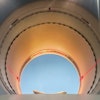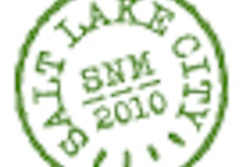A group of researchers from Johns Hopkins University in Baltimore is presenting a paper at the SNM show this week on a new SPECT/MRI system.
Although SPECT/CT systems have been commercially available for years, and PET/MRI units are being developed by several vendors, SPECT/MRI is still a novel area, the researchers wrote. They believe that combining the modalities could provide benefits by adding MRI's ability to provide soft-tissue contrast to fused images, compensating for factors such as photon attenuation and scatter, which can be present in SPECT imaging.
A research team led by Benjamin Tsui, PhD, developed a fully MR-compatible, stationary ring-type SPECT prototype for preclinical imaging based on cadmium zinc telluride (CZT) solid-state digital detector modules. All components used for the system consisted of nonferrous materials to avoid image artifacts that could otherwise occur within the MRI component's magnetic field.
In the study presented at the SNM show, Tsui and colleagues discussed their ability to capture dynamic data using multiple projection views without rotating the SPECT component. They also investigated image reconstruction methods that would best work with data acquired from the new imaging system.
According to the researchers, their study indicates that the SPECT/MRI system is a viable technology that could enhance the diagnostic capability of SPECT alone and provide additional information that SPECT/CT cannot. They plan to extend the preclinical prototype to clinical brain SPECT/MR, and clinical trials are expected to begin in three or four years.
The paper was part of a collaboration that included the University of California, Irvine, and was led by molecular imaging developer Gamma-Medica Ideas of Northridge, CA, under the support of a Small Business Innovation Research (SBIR) grant from the U.S. National Institutes of Health.
Copyright © 2010 AuntMinnie.com



















